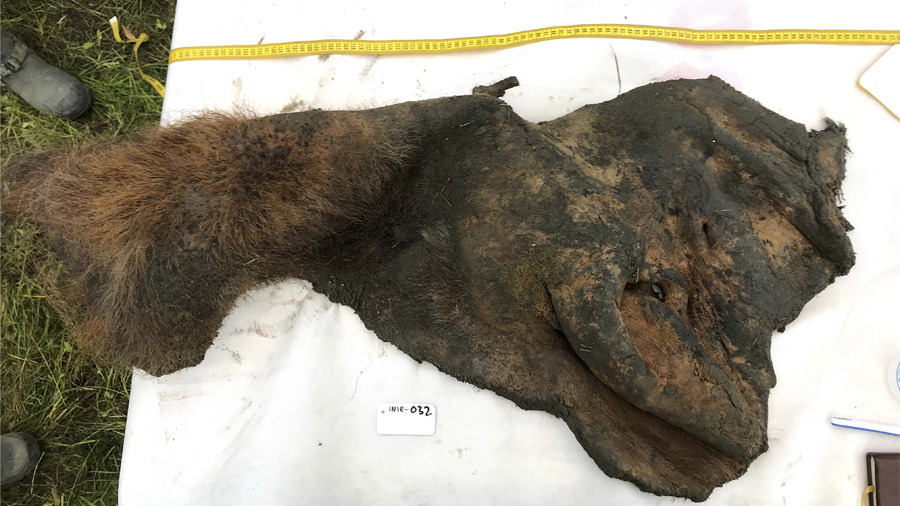An international research team including the involvement of the UAB has discovered ancient chromosome fossils in a skin sample of a woolly mammoth that died 52,000 years ago. This scientific discovery allows researchers to assemble the genome of extinct species.

The study, published in the journal Cell, was led by the Centre Nacional d'Anàlisi Genòmica (CNAG) and the Centre for Genomic Regulation (CRG), the Baylor College of Medicine (USA), and the University of Copenhagen (Denmark). Involved in the study on behalf of the UAB was Aurora Ruiz-Herrera, researcher from the Department of Cell Biology, Physiology and Immunology and from the Institute of Biotechnology and Biomedicine (IBB).
The research demonstrates that small ancient DNA fragments can survive during a very long period of time. What researchers additionally discovered was a sample in which the three-dimensional structure of these DNA fragments had been frozen, remaining untouched for dozens of millennia.
Fossil chromosomes are a powerful new tool for studying life on Earth. This is due to the fact that typical ancient DNA fragments rarely exceed the length of 100 base pairs, or 100 letters of genetic code, much shorter than the complete DNA sequence of an organism, which is often thousands of millions of letters. In contrast, fossil chromosomes can contain hundreds of millions of genetic letters.
The researchers determined the number of chromosomes in the mammoth. "We found that they have 28 pairs of chromosomes, which makes sense, because this is what modern elephants have, the closest living relatives of the woolly mammoth," says Juan Antonio Rodríguez, co-lead author of the study and researcher at the CNAG and the University of Copenhagen.
The discovery has changed the rules of the game because it makes it possible to assemble the complete DNA sequence of extinct species and obtain information that was not available until now. "It allows us to compare ancient DNA molecules with the DNA sequences of modern species. For this study, we compared the data of the mammoth genome with those of the African and Asian elephant genome," explains Aurora Ruiz-Herrera.
Active genes
The examination of the fossil chromosomes revealed which genes were active. For most, the activity status coincided with what the research team found in the skin of modern elephants, but not always: there were key genes that regulate the development of the hair follicle with a completely different activity pattern from that of elephants.
Another important feature observed was the survival of chromatin loops, structures mapped in humans by Baylor's team only ten years ago.
"The survival of the loops in these ancient chromosomes is perhaps the most impressive part," says Marc A. Martí-Renom, corresponding co-author of the study and leader of the Structural Genomics group at the CNAG, as well as at the CRG. "The DNA loops, which measure only 50 nanometres, are important because they bring the activating DNA sequences closer to their genetic targets. Therefore, these fossils not only show us which genes were active, but also why".
The research team observed that the chromosomes were in a similar state to that of the molecules in glass, which could explain how fragments of DNA from ancient chromosomes were able to survive in the Siberian permafrost for 52,000 years with their three-dimensional structure intact. The hypothesis that they would have been subjected to a process of "vitriolic transition" similar to that created by the processing of dried meat or jerky was validated by several experiments carried out with dried veal meat: at the nanoscale the chromosomes of the meat always remained intact.
Reference: Marcela Sandoval-Velasco et al. «Three-dimensional genome architecture persists in a 52,000-year-old woolly mammoth skin sample» Cell. https://doi.org/10.1016/j.cell.2024.06.002






